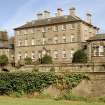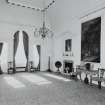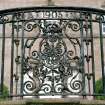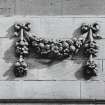Pricing Change
New pricing for orders of material from this site will come into place shortly. Charges for supply of digital images, digitisation on demand, prints and licensing will be altered.
Scheduled Maintenance Notice
Please be advised that this website will undergo scheduled maintenance starting on Thursday, 30th January at 11:00 AM and will last until Friday, 31st January at 10:00 AM.
During this time, the site and certain functions may be partially or fully unavailable. We apologise for any inconvenience this may cause.
Glasgow, Pollokshaws Road, Pollok Park, Pollok House
Country House (18th Century), Hospital (First World War), War Memorial (20th Century)
Site Name Glasgow, Pollokshaws Road, Pollok Park, Pollok House
Classification Country House (18th Century), Hospital (First World War), War Memorial (20th Century)
Alternative Name(s) 2060 Pollokshaws Road; Pollok House Estate; Pollock House Policies; Pollok Colliery; Pollock House Auxiliary Hospital
Canmore ID 44390
Site Number NS56SW 31
NGR NS 54867 61850
Datum OSGB36 - NGR
Permalink http://canmore.org.uk/site/44390
First 100 images shown. See the Collections panel (below) for a link to all digital images.
- Council Glasgow, City Of
- Parish Eastwood (City Of Glasgow)
- Former Region Strathclyde
- Former District City Of Glasgow
- Former County Lanarkshire
POLLOK ESTATE
The lands of Nether Pollok were the property of the Maxwell family from the 13th century. The original castle was built by Sir John Maxwell of Pollok, the second castle was inhabited until the mid-16th century, and the third was built in 1367. Sir John Maxwell, third baronet, started the present Mansion in 1747, completing it in 1752. In 1939 Sir John Stirling-Maxwell drew up a conservation agreement over the estate with the National Trust for Scotland, of which he was a founder member. His daughter gifted the house and estate to the City in 1966, with permission to build the Burrell Gallery in the grounds.
Pollok House, 1752, possibly Allan Dreghorn
Large mid-Georgian mansion with Gibbsian baroque details; hipped bellcast slate roof, swags beside upper windows. Original house raised over semibasement, plain elevations, rustic corner and keystoned lintels at ground and first floors. Projecting pedimented centrepiece to forecourt. Plain rear façade, wide central Venetian staircase window. High-quality internal decorative plasterwork and period furnishings; wonderful library. Low wings and ogee-roofed garden pavilions added, 1890 onwards, R Rowand Anderson. Important collections of Spanish paintings and six William Blake watercolours. Glasgow City Council, managed by National Trust for Scotland, open to the public, guide book.
Lodge, Pollok House, 97 Haggs Road, 1892, R Rowand Anderson. Scottish classical with shallow conical slate roof over a broad semicircular bay window. Shawmuir Lodge, Pollok Avenue, 2060 Pollokshaws Road, 1891, Robert Rowand Anderson. Scots Classical Lodge with bell-cast slate hipped roof. Tall square gatepiers with urns and decorative wrought-iron gates. Estate Bridge over River Cart, 1757. Single wide segmental arch, balustraded parapet, roadway widens at abutments. Stables Range, 17th to 19th century. Courtyard Range on site of previous house, the Laigh Castle, includes handsome Renaissance gateway (north-west side) and more 17th-century work incorporated into later buildings. Weir, Sawmill and Power Station, c.1860 for Sir John Stirling-Maxwell. Weir may be 18th century. Single-storey brick sawmill with early machinery, although a turbine replaces the low-breast water wheel. Late 19th-century Power Station, with Waverley turbine by Carrick & Ritchie of Edinburgh.
Taken from "Greater Glasgow: An Illustrated Architectural Guide", by Sam Small, 2008. Published by the Rutland Press http://www.rias.org.uk
NS56SW 31.00 54867 61850
NS56SE 46 c.5504 6164 Pollok House (Old Pollok House)
NS56SE 109.00 55973 61656 Shawmuir Lodge (East Lodge)
NS56SE 109.01 55967 61649 Gate Piers
NS56SE 459 56074 62464 Lodge (97 Haggs Road)
NS56SE 2168 55395 61585 Shaw Holm (one of the parks at Pollok)
NS56SW 31.01 55048 61753 Walled Garden
NS56SW 31.02 54886 61732 Bridge
NS56SW 31.03 55994 61662 Stables
NS56SW 31.04 54985 61609 Saw Mill
NS56SW 31.05 54844 61252 South Lodge
NS56SW 31.06 54986 61618 Power Station
NS56SW 31.07 54966 61605 Weir
NS56SW 31.08 54844 61835 Western Garden Pavilion
NS56SW 31.09 54907 61802 Eastern Garden Pavilion
NMRS Manuscripts MS/302, missing at time of upgrade show panels of Dutch hunting scenes in dining room made by Ramsay of Scott Morton's designs of Reginald Fairlie and vases in garden by Hew Lorimer.
MISCELLAEOUS:
Nat. Lib.'The Maxwells of Pollock'. By William Fraser. Vol 1 p.98.
This A-listed country house, now in the care of The National Trust for Scotland, was surveyed to increase photographic coverage of it in the NMRS as part of the Listed Buildings Recording Programme (LBRP) for 1999-2000. A comprehensive survey of its exterior and interior has been made, with particular emphasis on the principal rooms. Although research was carried out into the identity of its architect, it was not possible to ascribe it to one individual with certainty. The theory, as presented in the current guidebook, that it was the work of an unnamed Glaswegian architect working within the broad ambit of William Adam's style, remains unassailable at present.
An album made the Maxwell family in the early/mid 19th century, which includes numerous architectural images, was copied for the NMRS.
EXTERNAL REFERENCE:
Strathclyde Regional Archives, Pollok Maxwell Collection:
'Pollok House' 1813 Sketch of entrance front of Pollok House, representing intended portico by David Hamilton.
Plan and elevation for two roomed cottage (apparently for site opposite old porter's lodge). Tinted. Scale: 4':1". N.d. Site unknown at time of update.
Plan for cottage, smithy and byre. Scale: 41/2':1". N.d. Site unknown at time of update.
National Archives of Scotland: Gd 220/5/884/2-3
'Building of a House at Pollokhead'. Letter from sir John Maxwell of Pollok indicating that he intends to build a new house at Pollokhead 'on the side of the water, where some architects and people of skill tell me I shall find a much more preferable situation to that where the old [house] at present stands'. Enclosed in a letter from the Duke of Montrose to Mungo of Gorthie. 1733.
NMRS REFERENCE:
Farlie manuscripts, missing at time of upgrade 15.8.2000.
Panels to Dutch hunting scenes in dining room made by Ramsay of Cott Morton's to designs of Reginald Farlie, manuscript missing at time of upgrade 15.8.2000.
Vases in garden by Hew Lorimer, manuscript missing at time of upgrade 15.8.2000.
Standing Building Recording (3 July 2008)
NS 548 618 A standing building survey was carried out on 3 July 2008, of a timber garage attached to the W side of Pollok House, prior to its demolition. The survey consisted of photography, a scaled plan, a scaled elevation and written report. The survey concluded that the cast iron columns used to hold up the roof may have been re-used from a late 19th century, open-fronted, lean-to building, perhaps with a slate roof.
Archive: RCAHMS (intended). Report: NTS and WoSAS SMR
Funder: The National Trust for Scotland
HF James (GUARD), 2008
Standing Building Recording (2009)
NS 549 616 The focus of this year’s work was to re-assess and re-record many of the features in and around Pollok House (NS56SW 31.0). The aim was to attempt to identify any earlier remains of settlement in this area. As part of this work a standing building and photographic survey of the stables was undertaken. In conjunction with this a desktop survey of all published maps relating to the Nether Pollok estate was conducted to look for any significant structural changes. The estate plan of 1741 showed several buildings, including the gateway, inside a retaining wall, while the southern range facing the White Cart River, which was recorded during this
18th century survey, stood outside this compound. The phased development of the site reflects the changing requirements of the Pollok Estate and by the mid- to late 19th century virtually all traces of the earlier walled enclosure had been removed.
However, this year’s building survey found remains of the enclosure wall in the building fabric of the northern
range. Additional features included possible marriage stones incorporated into a 19th-century cottage in the courtyard, a large quantity of re-used stone from multiple structures, which have been set into the southern and north-western ranges of the site, and the reuse of smaller 18th-century domestic structures in 19th-century extensions to the stable complex. The recessed well-head described by the OS in 1954 was investigated and appears to be later than the initial gateway building, as the wall that the well-head is now
part of appears to be a different building phase, due to the presence of a now blocked-up gateway allowing access into the Walled Garden (NS56SW 31.1).
The stonework used to construct the majority of the complex was identified by Dr John Faithful, of the Hunterian Museum, as a sandstone belonging to the ‘Barrhead Grits’, due to the inclusion of large pieces of quartz in its matrix. This stone type was also used for the construction of Pollok House (NS56SW 31.0) and features in the building fabric of many of the stone buildings within the estate. Two locations for this stone were identified. One was immediately to the E on the S bank of the White Cart, which appears to have been the site of quarrying in the past. The other is a series of small quarries to the SE, now within the confines of Cowglen Golf Course. Investigation of 19th-century estate plans allowed for a limited survey of one of the larger quarries and it is entirely possible that this is the source for the stone used in parts of the range and Pollok House.
Archive: RCAHMS (intended)
Funder: Glasgow Archaeological Society
Mark Mitchell and Stephen Driscoll – Glasgow Archaeological Society
Standing Building Recording (24 July 2010 - 28 July 2010)
NS 548 618 The DACE field school undertook a standing building survey, 24–28 July 2010, which focused on the
southern aspects and gardens of Pollok House and the recording of the retaining walls and associated memorial for the staff and tenants of the estate.
The southern aspects of the house were investigated in detail using photographic rectification and visual phasing survey. The records of other structures were hand drawn and photographically recorded. A full visual survey of the house, including the interior of its main entrance way and all extensions to the property, was also undertaken. The survey results indicated that not only had the house been substantially re-engineered since its completion in 1757 but that original traces from the 18th-century structure, such as lime mortar, can still seen in specific areas on the northern side of the property. Alterations to the formal gardens to the E and S of the house were found to date to the late 19th to early 20th century, while the main expansion of the house, the addition of two wings and ornamental features date to the early to mid-20th century.
The rediscovery by one of the students (M Thornley) of an elevation plan showing the original ground levels in front of Pollok House was one of the major outcomes of the research. The original ground level, which is recorded in red pencil on the plan, appears to indicate the earlier roadway recorded on Robert Ogilivy’s 1741 estate plan. This estate plan records not only Pollok Toun, partially surveyed by Glasgow Archaeological Society (GAS) in 2009, but also the orchard site on which Pollok House was sited. However, Ogilivy’s plan is not topographical and the elevation plan increases our understanding of the landscape prior to the extensive
landscape engineering activity. Multiple cross comparisons between Pollok House and others from the same periods has helped to develop a better phasing sequence for the construction of the house and its immediate landscape.
The memorial plaque embedded in the garden’s retaining wall records both the casualties incurred by estate tenants and staff during WW1 and those who survived the conflict. It also records the dates of the conflict as 1914 to 1919, from the start of hostilities until the signing of the Treaty of Versaillies. The memorial is located between Pollok House and the Steadings and faces directly onto the 18th-century bridge that forms one of the main access routes to the house. Student research revealed the memorial to be highly unusual in its
prominent placement, its commemoration of the survivors along with the dead and its time frame.
This work has concluded the main core of archaeological work around Pollok House and the Old Steadings areas of Nether Pollok and has added to the main body of work conducted by GAS in Pollok Country Park. The initial analysis of the work appears to indicate that the placement of the current Pollok House and the landscape redesign was heavily influenced by the earlier medieval landscape.
Archive: RCAHMS (intended)
Funder: DACE, University of Glasgow
Mark Mitchell and Michael Thornley – DACE University of Glasgow.
Project (March 2013 - September 2013)
A project to characterise the quantity and quality of the Scottish resource of known surviving remains of the First World War. Carried out in partnership between Historic Scotland and RCAHMS.















































































































































































































